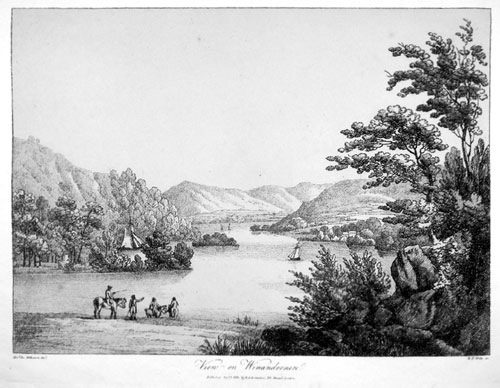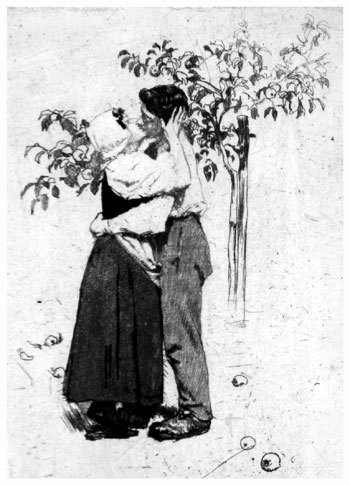Soft-Ground
Etching
Although
the earliest soft-ground etching was made
in the 1640’s by Benedetto Castiglione,
it was an isolated example and is known
only in an unique impression. The process
was re-invented in the middle of the 18th
century in France, probably by J C François
while he was developing crayon engraving
(see here).
The
admixture of tallow to the usual etching
ground renders it soft and waxy and prevents
it from setting hard when it is applied
in a thin layer to the copper plate. The
artist draws in pencil or crayon onto paper
laid over the soft ground (see right,
for a remarkable survival of such a drawing,
by the student Robert Austin). The pressure
lifts the ground and leaves the copper
partially exposed for biting in a bath
of acid in the usual manner (i.e. as in
hard-ground etching).
The
resulting printed line has an appearance
very similar in character and grainy texture
to a pencil or crayon drawing on paper.

William
Frederick Wells (1762–1836): "View
on Windermere (“Winandermere”)"
Soft-ground etching, 1810, after the drawing
by Revd Jos Wilkinson.
(297 x 401 mm)
Soft-ground
etching was invented as part of the crayon
engraving process as a means of making
facimiles of drawings. In 18th century
France it remained an adjunct of crayon
engraving but in England, which had no
tradition in crayon engraving, artists
saw the advantages of its immediacy to
make original ‘multiple drawings’ by
its means. Gainsborough was an early exponent.
In the 19th century the Norwich School
artists, Crome and Cotman, and the watercolourists
David Cox and Sam Prout took it up, and
for the first couple of decades it became
a popular medium. It was largely superseded
by lithography by 1830.

Ferdinand
Schmutzer (1870–1928): "The Kiss".
Soft- and hard-ground etching, 1904. (147
x 90 mm)
At
the end of the 19th century Frank Short
revived an interest in soft-ground etching,
though it did not attract many artists.
A similar revival of interest on mainland
Europe had a more wide-spread impact.
|